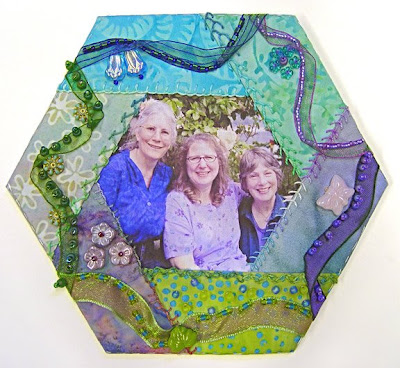What delight!
I found a wonderful site just on fun and play, especially, play for adults, and for everyone! It's called Deep Fun, and it's run by the resident "Fun Smith", Bernie DeKoven.
The following article, by Bernie, included in his page on "Pointless Games", shows just how play, especially silly, lighthearted play, can be a healing activity, especially for groups!
I'd really love to use it for one of the groups I belong to-- which has recently been going through a period of strained relationships -- SOON!
It's essentially based on the childhood game "A WHAT?" that i remember playing to the point of hysterics many times in high school. But here, Bernie has added a crazy twist!
Bernie calls this game...
"I give you a Glue Thing"

Following up on the Koosh experience, I managed to convince one of my favorite clients to agree to the vast expense of $5.95 per participant for what I hoped would prove to be yet another Kooshlike experience of finger-pleasing meditation.
I ordered a variety of Glue Things which were available at that time (but no longer) from Edmund's Scientific. (Similar sticky wonders are currently available from J. Rousek) These toys came in a variety of relatively "yucky" shapes like spiders and worms, and fall under the general classification of "icky toys." The catalog described them as: "Made of a soft, squishy, elastic compound with both liquid and solid properties, these amazing objects change shape in response to impact or shear forces, yet spring easily back to original form."
I waited for the first evening play session to introduce them to the group. This decision, to wait for the evening before distributing them, arose from that same mystical sphere of wisdom that purportedly protects fools and children.
Further, I started off by teaching the group how to play "A What?" -- one of my favorite games for engendering controlled mayhem. Everybody sits in a circle. They are each given an object (anything, really: a shoe, a set of keys, a piece of candy) and asked to give that object a name (any name, really: a Fred, a Pizza, a Furblick). Simultaneously, everyone turns to the person on the right, and says "I give you a...." (the .... being the name of the object). The people on the right then turn to the people on the left and say "a what?" This is repeated three times, and on the third time, everyone actually passes their objects, and the people on the right, must, upon receiving the object, say "Oh, a ...!" (the ... being whatever they think they actually heard the object being called. The goal, purportedly, is to pass all the objects completely around the circle, without changing the name originally ascribed to them. The actuality is that it is nothing short of miraculous when any of the objects retain their name.
After explaining the game, with great ceremony and serendipity, I gave everyone a Glue Thing. We made sounds of disgust and delight. We played. We laughed. We made it half-way around the circle and basically gave ourselves over to mass hysteria.
While I was introducing the next game, someone discovered yet another property of the Glue Thing. It turns out that if you throw it onto the ceiling, it actually sticks there for awhile. Within three minutes of this discovery, it began raining Glue Things.
In sum, we had spontaneously arrived at a new game, one that I hadn't planned for, one that brought the group together, and kept them together for the rest of the evening, and throughout the next day, until the very end of the two-day brainstorm, when somebody finally figured out how to remove the rest of the Glue Things from the ceiling.

- a guest post by Bernie DeKoven on Deep Fun
(This work is licensed under a Creative Commons License.)










 I haven't checked it out, but i'll let you know when i have. If any of you have seen/experienced it, do let us know what you thought!
I haven't checked it out, but i'll let you know when i have. If any of you have seen/experienced it, do let us know what you thought!








